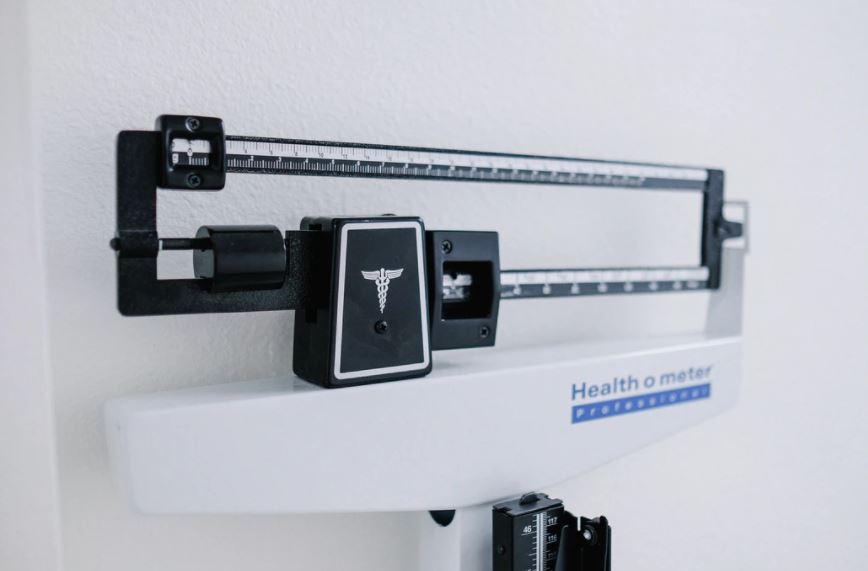A recent study looking at the relationship between body weight and severe COVID-19 has garnered a lot of media attention, concluding that a body mass index (BMI) of over 23 is associated with a higher risk of admission to hospital and death.
A BMI of 23 is nestled roughly in the middle of what is considered a healthy BMI for most people, between 18.5-25 kg/m2. (you can find a BMI calculator here).
While prior studies have shown a higher risk of severe COVID with a BMI of 30 or greater (considered to be in the obesity range by BMI criteria), this study definitely caused me to do a double take, as a BMI of 23 is very healthy and appropriate for many people. Can this really be true?
The study, published in The Lancet, prospectively evaluated data from general medical practices in England, looking at admissions to hospital, admission to ICU, and death due to COVID-19 in adults where BMI data was available, between January and April 2020.
Amongst 6.9 million people in the database, 13,503 (0.2%) were admitted to hospital, 1601 (0.02%) to an ICU, and 5479 (0.08%) died after testing positive for the coronavirus. They found:
- The lowest risk for admission to hospital was at a BMI of 23, with the risk going up on either side of that (a ‘J-shaped’ curve).
- The lowest risk of death was also at a BMI of 23, with the risk going up on either side of that.
- The risk of admission to ICU was lower with the lowest BMI, and increased in a linear fashion across the whole BMI range. (it’s not clear why this is, but it may be related to decisions whether or not to admit people who are very chronically ill with very low BMI to ICU, for example if a person has declined resuscitation and ICU admission due to other advanced/severe health conditions)
- The risk associated with higher BMI was higher for younger people (age under 40) compared to people over 80, and higher for Black people than for White people.
The study acknowledged that many of their BMI measurements were outdated in their database, so they repeated their analysis using only the 2.3 million people with a BMI recorded within a year of entry to the study. That time around, they found the lowest risk of admission to hospital was at a BMI of 25, and the lowest risk of death was at a BMI of 28.
In addition to having outdated and potentially imprecise BMI information in their database, the authors also acknowledge that there may be bias (error) due to many people in their database having no BMI recording at all.
It is important to remember that BMI is simply a calculation based on weight and height, and does not take into account other important factors like body composition (muscle vs fat), where body fat is distributed (healthier fat under the skin around eg hips and thighs, vs metabolically unhealthy fat around the organs and abdomen), nor does it tell us anything about underlying health. There are many people who have a BMI of 23, 25, or even higher, who are muscular and don’t carry excess fat – we certainly would not consider these individuals to be at adverse health risk. That being said, there are people who carry excess fat (with consequent health issues) even with a BMI lower than 23 – in India for example, a BMI of over 23 is considered to be in keeping with ‘overweight’, because people of Indian ethnicity have a genetic tendency to carry excess fat around the abdomen and organs at a lower BMI.
The association between BMI and severe COVID being higher for younger people is in keeping with other studies previously published. The authors propose that this may be related to more central fat in young people; I wonder if this may also be related to the obesity paradox (having a little extra fat tissue may be beneficial to survive an illness in older people).
The authors note that the higher risk of severe COVID-19 amongst Black people in the study may relate to a predisposition towards carrying abdominal/visceral fat. I wondered if this finding may relate to socioeconomic disparity, though they did not find a signal in evaluating the overall population by a socioeconomic status index.
BOTTOM LINE (in my view):
BMI is not the best measure of excess fat, and people with a BMI of (around) 23-30 do not all have a higher risk of severe COVID-19. That being said, carrying excess adipose (fat) tissue does increase the risk of more severe COVID infection.
The coronavirus pandemic has highlighted the negative health consequences and risks of obesity, and we as a global obesity care community hope (and actively advocate) that this will empower changes to increase access to obesity care and treatment.
Share this blog post using your favorite social media link below!
Follow me on twitter! @drsuepedersen
www.drsue.ca © 2021












